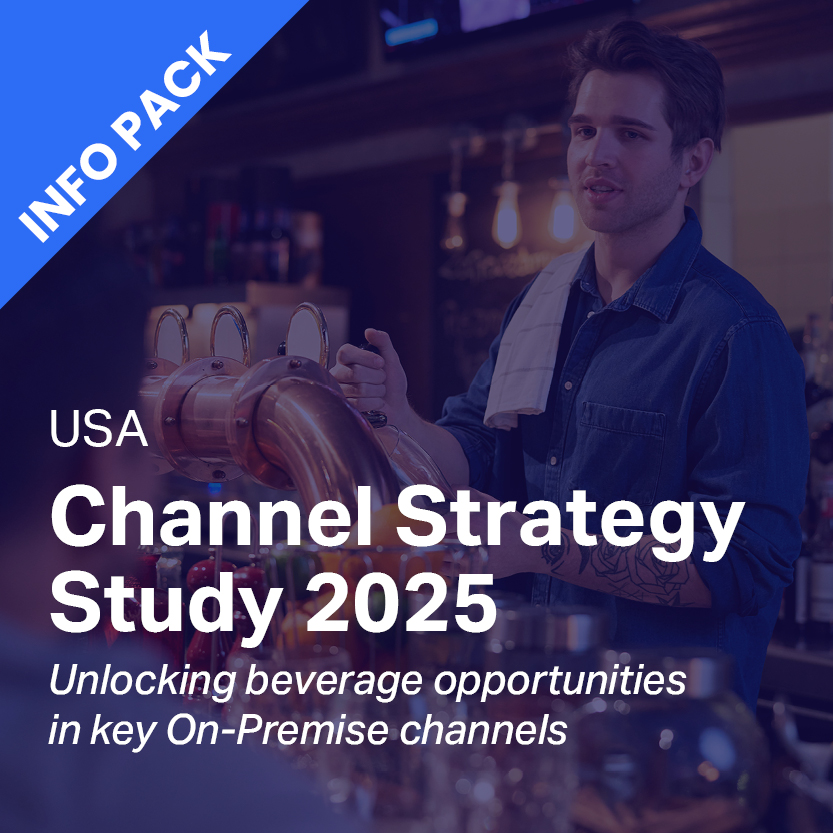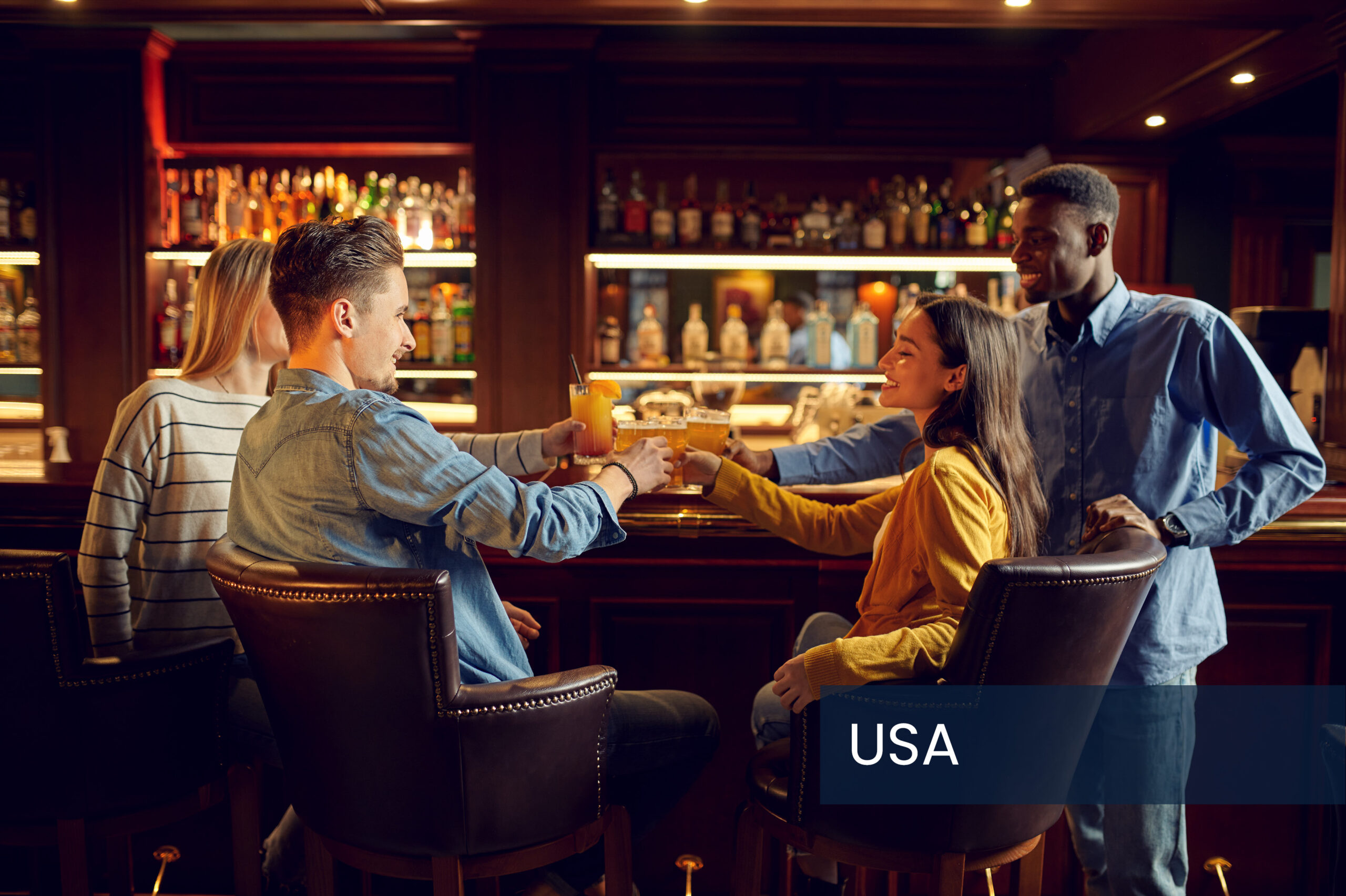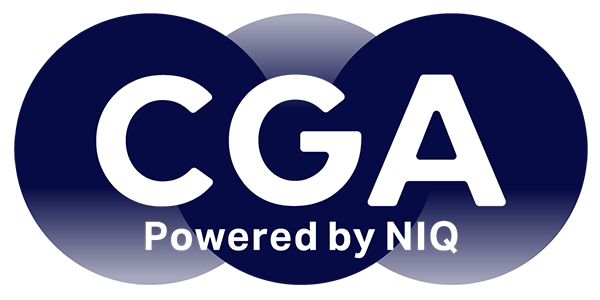
Bars, restaurants and other licensed premises are embedded in the social fabric of the United States, attracting half (49%) of all Beverage Alcohol dollars in the country—equivalent to $108 bn a year.
More than three quarters (77%) of On-Premise consumers have been out to eat in the last month, while half (49%) have had a drink out-of-home. Of those who have gone out, almost two in three (67%) have done so at least once a week.
The outlook for the rest of 2025 is also good, with 35% expecting to visit more often over the next three months—double the number (15%) who will go out less. Visits will be driven up by Christmas, but the future outlook into 2026 also indicates stability, with 27% planning to eat and drink out more frequently in the next 12 months, and 22% expecting to do so less often.
Venues for all occasions
Another welcome sign is that US consumers are making the On-Premise a top priority for their spending. Seven in ten (71%) of them say they would feel lost or disappointed if they could no longer go out to eat and drink. It’s clear that this is where Americans go to socialize, celebrate, relax and treat themselves.
Crucially, the value of out-of-home visits extends deep into the Off Premise as well. Preferences and habits that are established in bars and restaurants translate directly into retail sales, with three in five (61%) consumers purchasing a brand in-store after first trying it in a venue, making the On-Premise a priority for brand positioning and promotion.
The shifting shape of the On-Premise
Pressure on consumers’ spending is making the On-Premise an ultra-competitive battleground for brands. Value velocity in the average US outlet has dropped year-on-year, and check values are slightly down too. This makes it more important than ever to track changes in people’s channel choices, and their different preferences in each channel and by occasion.
More positively, despite tight spending, the US outlet universe is in growth. The latest data shows there are 303,810 traditional On-Premise locations with an alcohol license—up by 0.5% year-on-year, and even higher than the pre-COVID-19 levels of 2019.
Sub-channels
Everyday casual venues are growing particularly fast. Casual dining restaurants, the single most popular channel for visitation, have grown by 2.3% in two years. More than four in five (83%) On-Premise users typically go there, and 71% of these do so at least weekly. As well as the opportunity to socialize, connect and rest, they enjoy the ease and convenience of casual dining restaurants.
These are the same motivators that lead people to use neighborhood bars, where site numbers have risen even faster at 3.7%—an impressive revival after widespread closures over the last decade. They remain at the heart of US social life: more than half (53%) of consumers typically visit them, and 66% of this group do so weekly.
By contrast, the high-energy and premium bar segments are smaller than they were two years ago, though they remain very popular when consumers seek purely drinking occasions. There is ample potential to drive loyalty and repeat purchases in these and other more niche, drink-focused channels like experiential venues and airport bars.
Fine dining is another evolving segment. Site numbers have dropped by 9.8% in the last two years and the drop in value velocity is even sharper at 22%—but the average check value has jumped 18.0%. This is proof that while frequency levels are well down, people are spending substantially more when they do visit a fine dining restaurant. This is a particularly affluent cohort, with annual incomes that are $15,000 above average, so it’s a very valuable channel for stocking premium options. However, with fewer visits on which to capture sales, and the opportunities for listings becoming more limited, it is even more essential for brands to make compelling cases for inclusion on menus and to activate effectively.
Matthew Crompton, VP On-Premise, Americas at CGA by NIQ, said: “The On-Premise provides unrivalled opportunities for suppliers to engage US consumers. It’s where people go to socialize, celebrate, indulge, recharge and make memories, and where brands can make emotional and lasting connections. But this is an ultra-diverse landscape with an incredible variety of venues, and one-size-fits-all strategies simply don’t work. To win in the On-Premise, brands need to know how behaviors vary, and craft precisely targeted strategies that reach the right consumers with the right products in the right places. With indications that consumer spending could improve in 2026 and beyond, now is the time to invest in a deep understanding of channels that leaves teams in the best shape possible to capitalize on opportunities.”
The Channel Strategy Study 2025 report is packed with insights into the On-Premise landscape, helping businesses understand different channels’ needs and pinpoint the ones with the greatest sales potential. It enables leaders to identify the venues where investment in resources and sales teams will be most effective and builds the foundations for successful activations of categories and brands. The study has been relaunched following major demand and provides best-ever analysis of the US On-Premise by channel, thanks to an increased sample size, enhanced questions and extra metrics. As well as the core report, channel-specific analysis is available to deepen insights.
To learn about the research and acquire the Channel Strategy Study 2025, contact the CGA by NIQ team.




